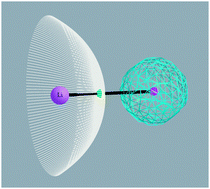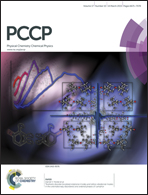Where to place the positive muon in the Periodic Table?†
Abstract
In a recent study it was suggested that the positively charged muon is capable of forming its own “atoms in molecules” (AIM) in the muonic hydrogen-like molecules, composed of two electrons, a muon and one of the hydrogen's isotopes, thus deserves to be placed in the Periodic Table [Phys. Chem. Chem. Phys., 2014, 16, 6602]. In the present report, the capacity of the positively charged muon in forming its own AIM is considered in a large set of molecules replacing muons with all protons in the hydrides of the second and third rows of the Periodic Table. Accordingly, in a comparative study the wavefunctions of both sets of hydrides and their muonic congeners are first derived beyond the Born–Oppenheimer (BO) paradigm, assuming protons and muons as quantum waves instead of clamped particles. Then, the non-BO wavefunctions are used to derive the AIM structures of both hydrides and muonic congeners within the context of the multi-component quantum theory of atoms in molecules. The results of the analysis demonstrate that muons are generally capable of forming their own atomic basins and the properties of these basins are not fundamentally different from those AIM containing protons. Particularly, the bonding modes in the muonic species seem to be qualitatively similar to their congener hydrides and no new bonding model is required to describe the bonding of muons to a diverse set of neighboring atoms. All in all, the positively charged muon is similar to a proton from the structural and bonding viewpoint and deserves to be placed in the same box of hydrogen in the Periodic Table. This conclusion is in line with a large body of studies on the chemical kinetics of the muonic molecules portraying the positively charged muon as a lighter isotope of hydrogen.


 Please wait while we load your content...
Please wait while we load your content...